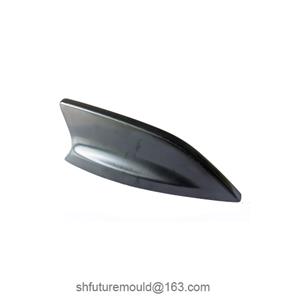Core Process of Injection Molding
Injection molding is the most common method for producing plastic products. It involves injecting heated, molten plastic into a mold, where it cools and solidifies into the desired shape. The entire process can be divided into the following core steps:
I. Raw Material Preparation
Selection of suitable plastic raw materials: Based on product performance requirements, usage environment, and cost factors, suitable plastic raw materials are selected. Common plastic raw materials include polyethylene (PE), polypropylene (PP), polystyrene (PS), polyvinyl chloride (PVC), ABS, polycarbonate (PC), and nylon (PA). Consider the flowability, shrinkage rate, heat resistance, corrosion resistance, and other performance indicators of the raw materials to ensure the quality and performance of the product.
Raw material drying: Many plastic raw materials absorb moisture from the air during storage and transportation. Excessive moisture content can lead to defects such as bubbles, silver streaks, and reduced strength in the product. Therefore, the raw materials need to be dried before injection molding.
Select appropriate drying equipment, drying temperature, and time-based on the type of plastic raw material. Generally, the drying temperature is between 80°C and 120°C, and the drying time is 2-8 hours.
II. Injection Molding
Feeding: The dried plastic raw material is added to the hopper of the injection molding machine. The injection molding machine usually uses a screw-type feeding device to transport the plastic raw material to the heating cylinder through the rotation and pushing of the screw.
Plasticization: The plastic raw material is heated and melted in the heating cylinder and, under the shear and mixing action of the screw, forms a uniform melt. During the plasticization process, the heating temperature, screw speed, and back pressure need to be controlled to ensure the quality and stability of the melt. Different plastic raw materials require different plasticization temperatures, generally between 150°C and 350°C. The screw speed and back pressure should be adjusted according to the product requirements and the characteristics of the raw material to ensure the fluidity and uniformity of the melt.
Injection: When the melt reaches the required temperature and quality, the screw of the injection molding machine injects the melt into the mold cavity at a certain pressure and speed. During the injection process, the injection pressure, injection speed, and injection time need to be controlled.
The injection pressure is generally between 50 and 200 MPa, the injection speed is adjusted according to the size and complexity of the product, and the injection time depends on the volume of the mold cavity and the fluidity of the melt.
Dwelling: After injection, the injection molding machine maintains a certain pressure to prevent the melt from shrinking during cooling, which can cause defects such as shrinkage and sink marks in the product. During the dwelling process, the dwelling pressure and dwelling time need to be controlled.
The dwelling pressure is generally 50%-80% of the injection pressure, and the dwelling time is adjusted according to the thickness of the product and the cooling rate, generally between 5 and 30 seconds.
Cooling: The melt cools and solidifies in the mold cavity, forming the shape of the product. During the cooling process, the mold temperature, cooling time, and cooling method need to be controlled.
The mold temperature is generally between 20°C and 80°C, the cooling time is adjusted according to the thickness of the product and the thermal properties of the material, and the cooling method can be water cooling, air cooling, or oil cooling.
Demolding: When the product has cooled and solidified, the mold of the injection molding machine opens, and the product is ejected from the mold cavity by the ejector mechanism. During the demolding process, the ejection speed and ejection force need to be controlled to prevent the product from deformation or breakage.
The ejection speed and ejection force should be adjusted according to the shape and size of the product. Generally speaking, the ejection speed should not be too fast, and the ejection force should not be too large.
III. Post-processing
Removal of gates and flash: After the product is demolded, the gates and flash need to be removed. This can be done manually, mechanically, or using ultrasonic methods.
Inspection and packaging: Inspect the product to ensure that the appearance quality, dimensional accuracy, and physical properties meet the requirements. Qualified products are packaged for storage and transportation.
The packaging method can be selected according to the characteristics and requirements of the product, such as plastic bag packaging, cardboard box packaging, or pallet packaging.




